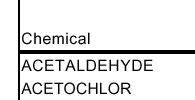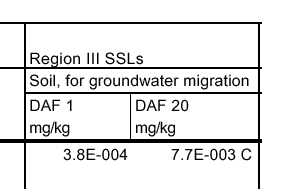
The term "Corrective Action" implies risk management. It implies that you have assessed the risk, and now will do something about it. Remember the scenario from Module 2: A worker/neighbor/ member of the public shows up with a Ziploc bag filled with something, ..."this is from the area behind the storage shed...where all the vegetation is dead." Your next action is really risk management. You will tell the visitor to get lost, or take the bag down the hall, or you will go to your boss and start trying to get time and budget to do whatever it is you will do next. This is risk management, prior to risk assessment. Or you could say you made a quick mental risk assessment. From this simple beginning to a multi-million dollar cleanup, there are many management decisions that must be made, each based upon the information gathered from earlier phases. In the case of Superfund, this decision-making process has been formalized, as we discussed in Module 2.
As a practical matter, most environmental contamination is not Superfund, or never gets to the Superfund process for one reason or the other. Also, petroleum contamination is excluded from Superfund. So what decision-making process do we follow? Of course if there is an applicable state or federal regulation, we have to follow that. Often those regulations are not that specific, and even if they are, they often specify the very process that is outlined below.
The notion of a risk-based concentration starts with the global assumption that there is a level of contamination at which the risk of adverse effects is so low, there is no need to proceed with a detailed (and expensive) risk assessment. These are called risk-based concentrations or risk-based screening levels. In 1986 or thereabouts, I got an 81/2 by 11 sheet from the New Jersey Environmental Agency that has RBC's for 20 or so of the most common soil contaminants. (New Jersey is my home state, but I avoid going there; I was given that sheet at a conference in Washington D.C.) For each chemical it had the chemical's name and a concentration. End of story. About that time the EPA Region 3, which if you look on a map is the tier of states just below New Jersey and almost as polluted, started to develop a similar RBC table. Unlike the New Jersey table, which I believe was developed by real estate brokers who wanted to sell land, the EPA table was developed by a toxicologist. It started out simple and un-bureaucratic, it made sense and was easy to read. The RBC has been under assault ever since. Today it starts with a 10 page disclaimer and is no longer "simple." It is still valuable, however. It is not meant to cover air pollution and leaching to groundwater but that is for bureaucratic reasons more than science.
If you'll pardon my editorializing, go to the RBC then "Updated Risk Based Concentration Table Cover Memo," read the first two and half pages. Then go to the RBC table itself which you can get as a pdf or Excel file. Here's what the first items in the table looks like (chopped up so they fit on this page):
Chemical name:

CAS you know. Next the RfD and Cancer slope factors for oral and inhalation, and also if the chemical is a "Volatile Organic Contaminant." As you learned in IRIS, not all chemicals have all of these published. For the most part these are from IRIS.

Now the RBCs. What this says is that for Acetochlor (the lower line) if you had an industrial site with 4.0 x 104 mg of acetochlor per kg of soil (4 g / kg), the risk is very small. Further that the risk is from non-cancer effects.

The last section shows some bureaucratic situation. Region III can set its own limits for air and water, but not for other regions. Hence they do publish their own:

Where SSL stands for soil screening level. (I'm not sure what DAF stands for. Extra Credit for anyone who can tell me.)
So how are RBC's calculated? For an exact answer, you can plow through the data in the "background information" and the rest of the cover memo, but you do not need to do so for this course. You do need to know that EPA Region III made very conservative assumptions. The word "conservative" means that the assumption is probably very protective of human health. In fact they make many assumptions, all of which are conservative, so that the final number is very conservative. For example, you learned earlier that a HQ of less than 1 was safe. Here they use of aHQ of 0.1 to get the RBC. However there are many more assumptions besides that in the process. So why does one bother with a risk assessment if you have the RBCs. The answer is that the since the RBC's are 10 times or 100 times more conservative that necessary, if you were do to do a cleanup to the RBC standard, you might be cleaning 10-fold or 100-fold more than you need to. If your site is below the RBC, you are home free and should not have to do anything. (Although note I used the word "should.") If your site is over the RBC, you will probably want to do a risk assessment. But there is a logical approach to this, and that is called RCBA, on the NEXT page.
EQE 693 Homepage Module 9 Index